20 Small-Town Downtowns Full Of Charm And Character
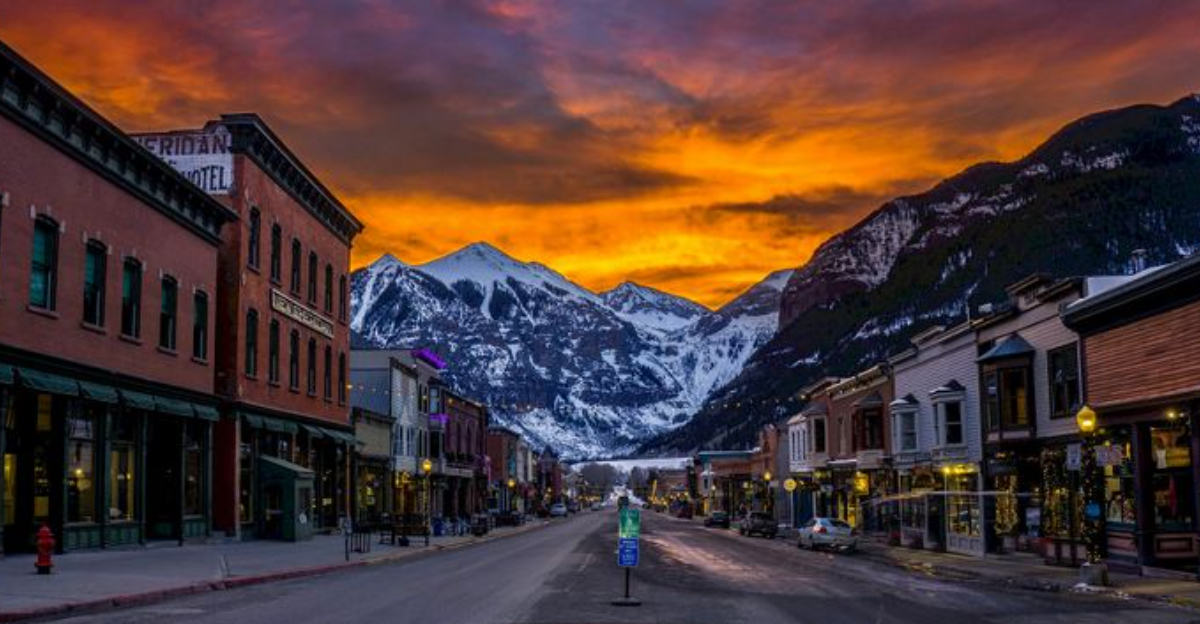
Big cities may sparkle with skyscrapers and endless options, but there’s a special charm in small-town downtowns that’s impossible to replicate. These places have soul. You can stroll past vintage storefronts, sip coffee in family-run cafés, and strike up conversations with people who genuinely want to chat—not just sell you something.
I’ve wandered into many of these hidden gems on road trips and always leave feeling like I’ve stepped into a living postcard. Whether you’re drawn to historic architecture, quirky local shops, or that warm sense of community, these downtown districts are where American charm truly shines.
So, how many of these cozy corners have you discovered—or are you about to fall in love with one for the first time?
1. Woodstock, Vermont
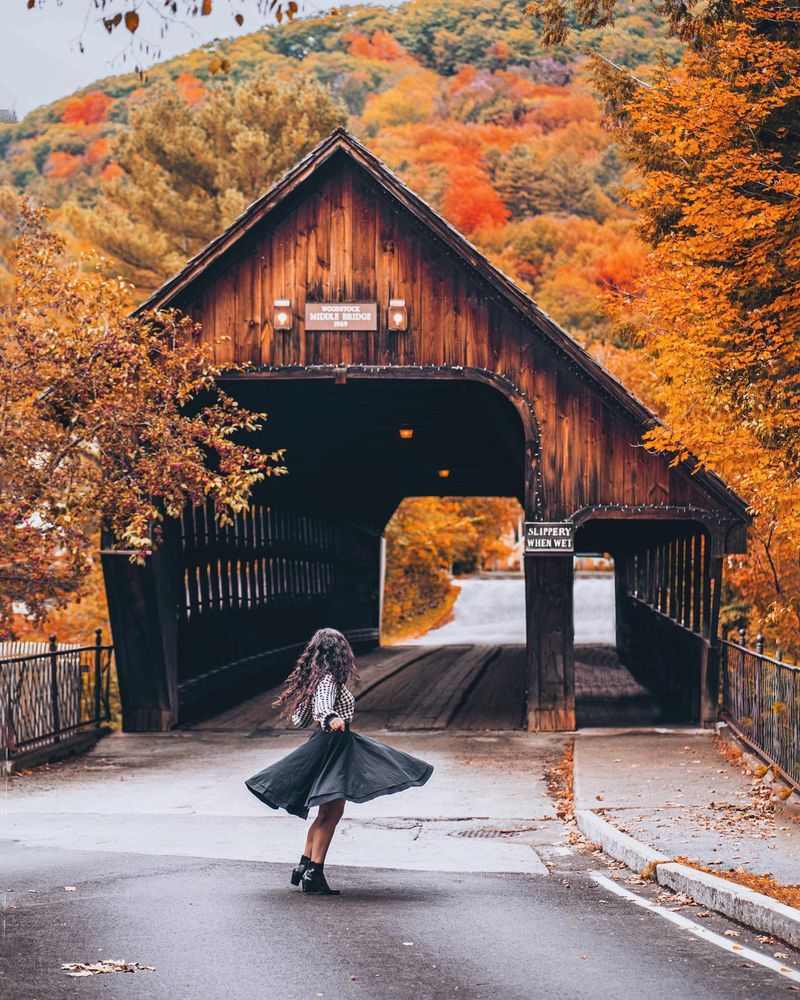
Nestled in the Green Mountains, Woodstock’s downtown looks like it jumped straight out of a New England postcard. The village green sits surrounded by Federal-style homes and buildings dating back to the 1800s.
Local shops sell Vermont-made products like maple syrup and hand-crafted furniture instead of touristy trinkets. Even the bookstore feels special, with creaky wooden floors and reading nooks tucked into corners.
During winter, gas lamps cast a warm glow on snow-covered streets. Summer brings farmers markets where you can chat with the person who grew your tomatoes. It’s no wonder National Geographic named it one of America’s most beautiful small towns.
2. Galena, Illinois
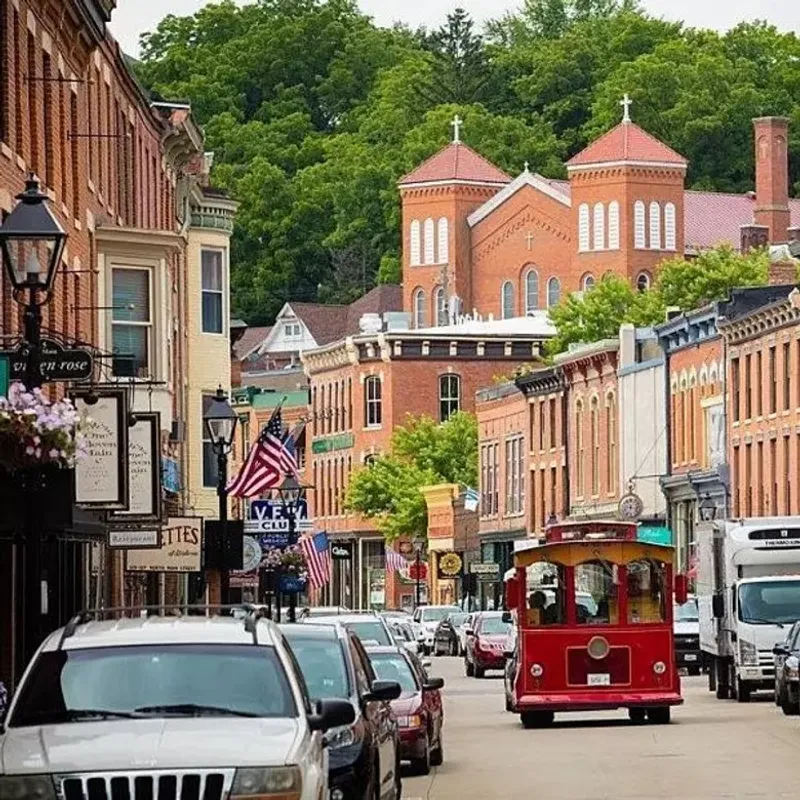
Frozen in time, Galena’s downtown offers a remarkable glimpse into 19th-century America with over 85% of its buildings on the National Register of Historic Places. Main Street curves alongside rolling hills, lined with perfectly preserved brick buildings housing independent shops and restaurants.
History feels alive here. Ulysses S. Grant once called this place home, and his residence remains open for tours. The town escaped modernization partly because economic downturns prevented developers from tearing down historic structures.
Shopkeepers greet visitors by name after just one visit. Weekends bring wine tastings at local vineyards and trolley tours that tell tales of riverboat captains and lead miners who once walked these same streets.
3. Beaufort, South Carolina
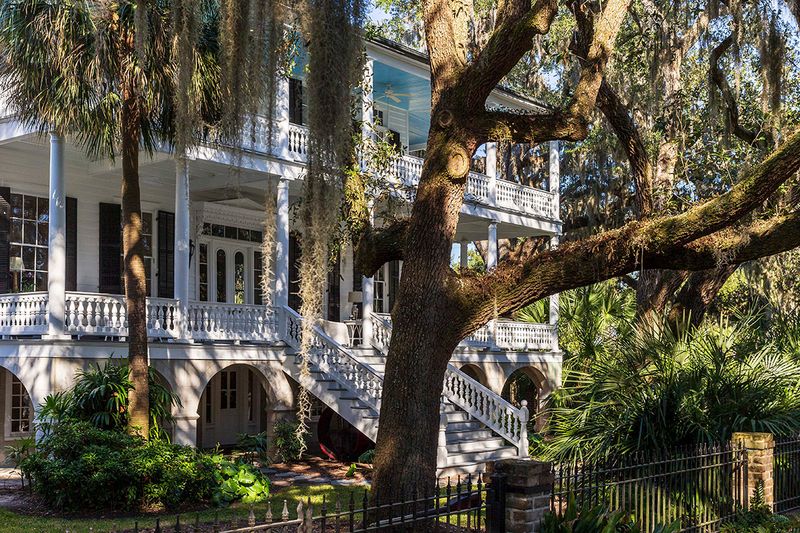
Spanish moss drapes from ancient oak trees along Beaufort’s waterfront downtown, creating natural canopies over streets lined with antebellum mansions. The salty breeze carries whispers of stories dating back to 1711, making it one of the South’s oldest towns.
Locals swing on porch swings overlooking the Beaufort River, waving to passing visitors. The downtown district survived both Revolutionary and Civil Wars, with many buildings repurposed rather than replaced. Horse-drawn carriages still clip-clop down Bay Street.
Seafood restaurants serve fresh catches from waters visible from your table. Small art galleries showcase Gullah culture and coastal landscapes painted by artists who found inspiration in Beaufort’s quiet beauty. Pat Conroy fans can visit spots mentioned in his beloved novels.
4. Eureka Springs, Arkansas
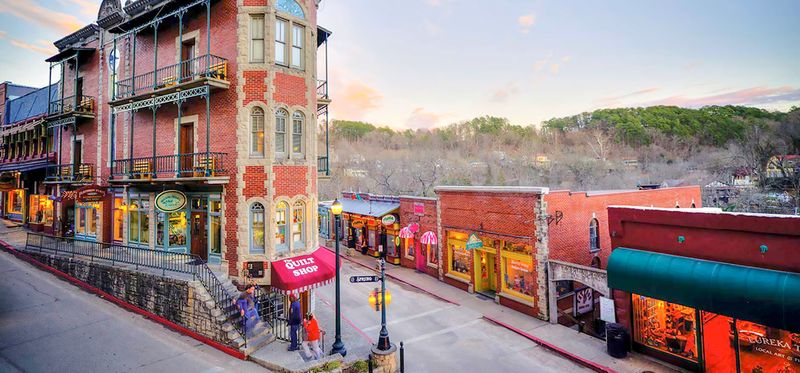
Built into steep Ozark Mountain hillsides, Eureka Springs downtown defies typical town planning with winding streets that sometimes cross over themselves. Victorian buildings cling to impossible angles, connected by staircases carved directly into limestone.
Artists discovered this quirky town in the 1970s, transforming it into a creative haven. No chain stores exist downtown – every shop, gallery, and restaurant remains fiercely independent. Even the lampposts look hand-crafted.
Springs that once attracted health-seekers still bubble throughout downtown, marked by small gazebos. The entire downtown earned National Historic District status for its well-preserved architecture. At night, ghost tours reveal stories of healing waters and Victorian-era visitors who never left this magical mountain town.
5. Marfa, Texas
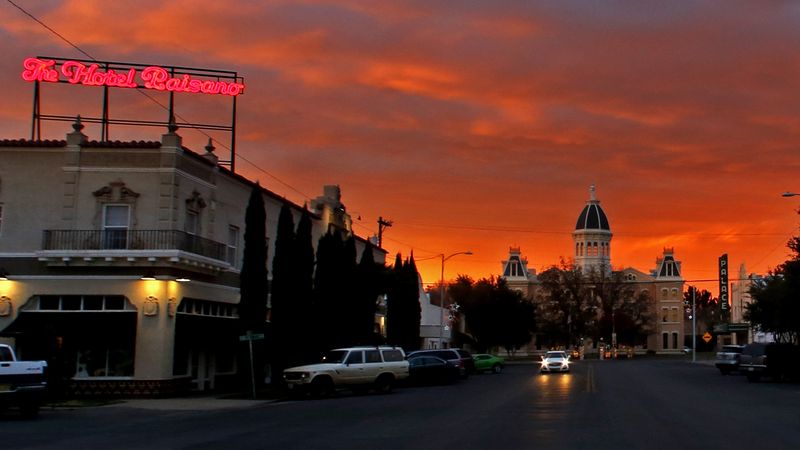
Marfa stands as an art oasis in the vast Texas desert, where minimalist galleries occupy former military buildings around a classic western courthouse square. The downtown feels both timeless and cutting-edge, with adobe structures housing world-class art installations.
Food trucks serve gourmet meals next to century-old hardware stores. This remote town (three hours from the nearest airport) transformed when artist Donald Judd arrived in the 1970s, seeking perfect light and wide-open spaces for his large-scale works.
Cowboys still tie horses to hitching posts outside buildings now housing film festivals and art symposiums. At night, the famous Marfa lights might appear on the horizon while you sip locally-distilled whiskey at a bar where ranchers and New York art critics share tables in unexpected harmony.
6. Port Townsend, Washington
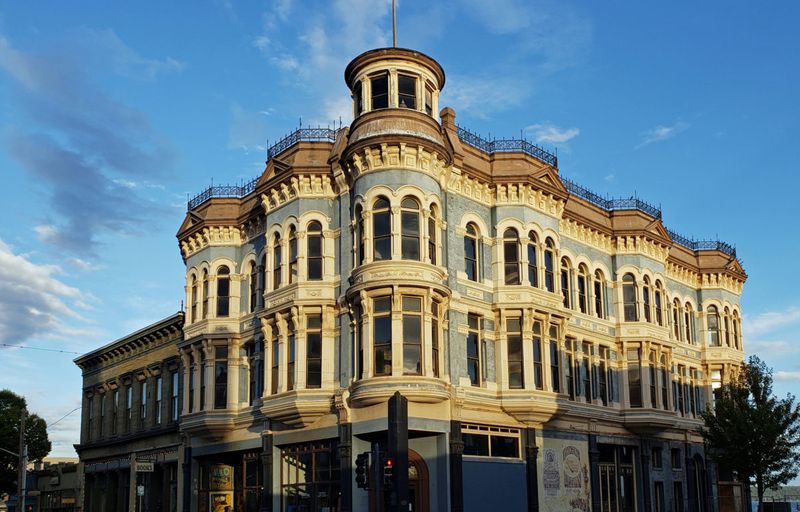
Maritime heritage shapes every corner of Port Townsend’s downtown, where Victorian seaport architecture meets Pacific Northwest wilderness. Red brick buildings with ornate iron details line Water Street, home to sailors and dreamers since the 1850s.
Fog rolls in most mornings, wrapping the town in mystery until it burns away to reveal views across Puget Sound to the Olympic Mountains. Wooden boats still get built in boatyards visible from downtown cafes where locals discuss tide tables over coffee.
Writers and artists moved here in waves, creating a town where bookstores outnumber chain stores and live music spills from pubs housed in former brothels. The town once expected to become “the New York of the West” before the railroad bypassed it, accidentally preserving its 19th-century charm.
7. Taos, New Mexico
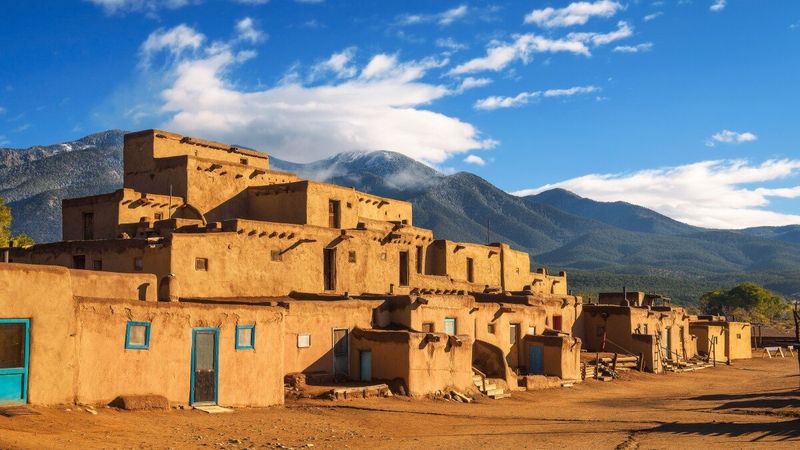
Adobe buildings with rounded edges frame Taos Plaza, creating a downtown that seems sculpted from the earth itself. Turquoise doors and windows pop against terracotta walls that have witnessed centuries of trading between Native Americans, Spanish settlers, and Anglo merchants.
Walking these narrow streets feels like traveling through multiple cultures simultaneously. Native artisans sell jewelry under portal walkways while contemporary galleries showcase cutting-edge art. The downtown smells of piñon wood smoke, roasting chilies, and sage.
Taos Pueblo, continuously inhabited for over 1,000 years, sits just miles from downtown, influencing the architecture and spirit of the historic district. At sunset, the adobe walls glow golden as musicians gather in the plaza, playing songs that blend Spanish guitar with Native rhythms.
8. Fernandina Beach, Florida
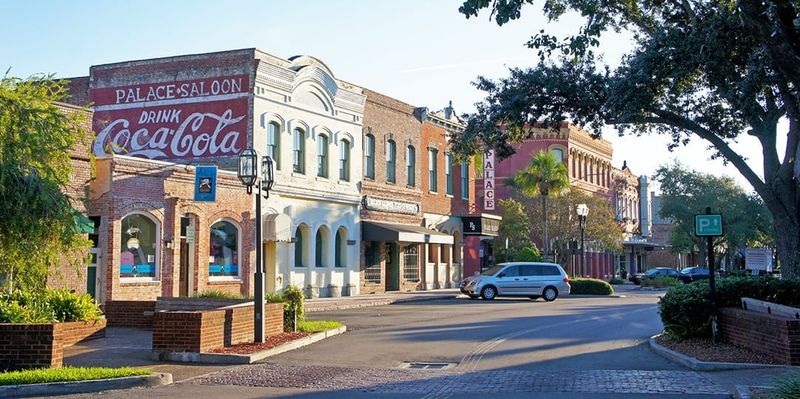
Pirates once walked Centre Street in Fernandina Beach, leaving behind a downtown filled with Victorian splendor and seaside charm. Located on Amelia Island, this former smugglers’ haven now welcomes visitors to Florida’s northernmost barrier island.
Fifty-block downtown district contains buildings dating back to when Florida belonged to Spain. Shrimping boats still dock at the marina, supplying fresh catches to restaurants housed in former saloons. The Palace Saloon, Florida’s oldest continuously operating bar, serves drinks in a space with hand-carved mahogany and pressed tin ceilings.
Horse-drawn carriages share streets with cyclists as locals gather at sidewalk cafes. The town has survived under eight different flags throughout history, with each culture leaving architectural fingerprints throughout the downtown. Spanish moss sways overhead as seagulls call from the nearby harbor.
9. Staunton, Virginia
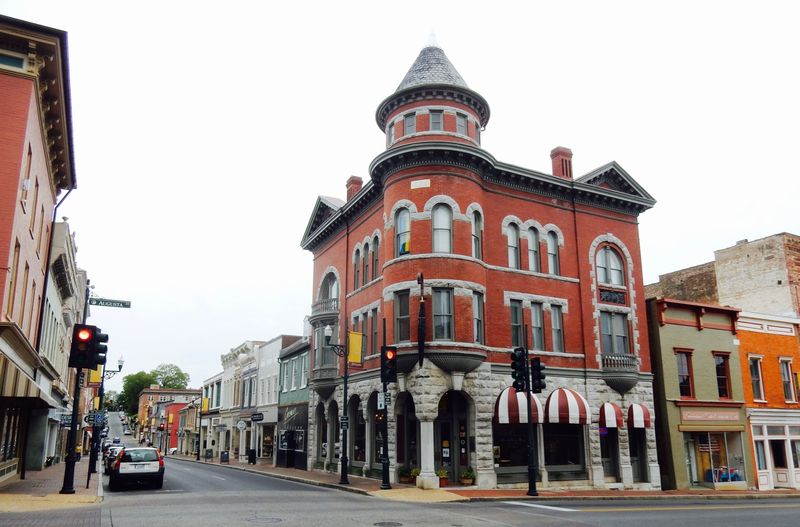
Red brick buildings climb steep hills in downtown Staunton, creating a theatrical setting appropriate for the hometown of Shakespeare’s American home. The world’s only recreation of Shakespeare’s Blackfriars Playhouse anchors a downtown filled with 19th-century architecture and modern creativity.
Whimsical shops occupy storefronts with original glass windows, selling everything from handmade chocolates to rare books. The town’s five distinct historic districts somehow avoided Civil War destruction despite being located in the Shenandoah Valley.
Train whistles still echo through downtown as Amtrak stops at the restored 1902 station. President Woodrow Wilson’s birthplace stands just blocks from farm-to-table restaurants and craft breweries. The town embraces its historic bones while welcoming innovation, creating a downtown that feels both timeless and surprisingly contemporary.
10. Deadwood, South Dakota
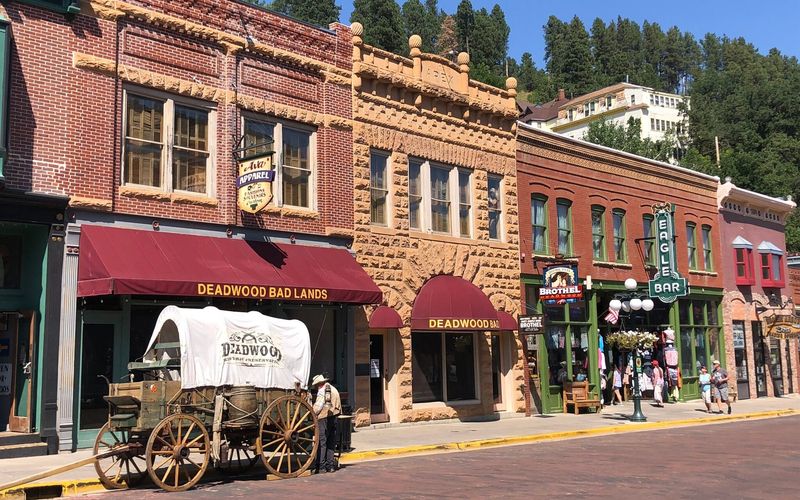
Gold rush fever built Deadwood’s downtown, where Wild West legends like Wild Bill Hickok and Calamity Jane once roamed streets now listed entirely on the National Historic Register. Restored Victorian buildings house casinos, restaurants, and museums instead of saloons and brothels.
History feels tangible here. Mount Moriah Cemetery overlooks downtown, where guided tours show graves of frontier legends. The 1876 gold rush transformed this Black Hills gulch from Native American land into a boomtown overnight.
Though gaming returned in 1989 to fund historic preservation, the town balances tourism with authenticity. Main Street still follows the original narrow gulch, with buildings tucked against hillsides. During summer, actors recreate shootouts while winter brings snowmobilers who park their machines outside historic hotels that once housed miners seeking fortune.
11. Carmel-by-the-Sea, California
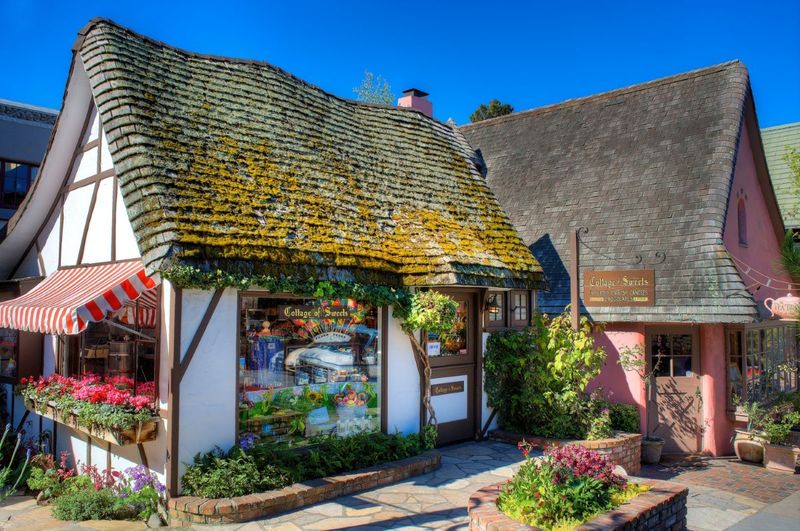
Fairy-tale cottages with names instead of street addresses create Carmel’s storybook downtown. Pine trees frame views of the Pacific Ocean at the end of streets where no traffic lights, parking meters, or chain restaurants exist by town ordinance.
Artists established this seaside village in the early 1900s after San Francisco’s devastating earthquake. Their bohemian spirit remains in hidden courtyards and secret passageways between buildings. Former mayor Clint Eastwood helped preserve the town’s character through strict building codes.
Wine tasting rooms share blocks with art galleries showing works from the town’s still-thriving artist community. Dogs receive treats at nearly every shop entrance, making it America’s most pet-friendly downtown. At sunset, locals perform the daily ritual of gathering on the white-sand beach visible from downtown streets to watch the sun sink into the Pacific.
12. Natchitoches, Louisiana
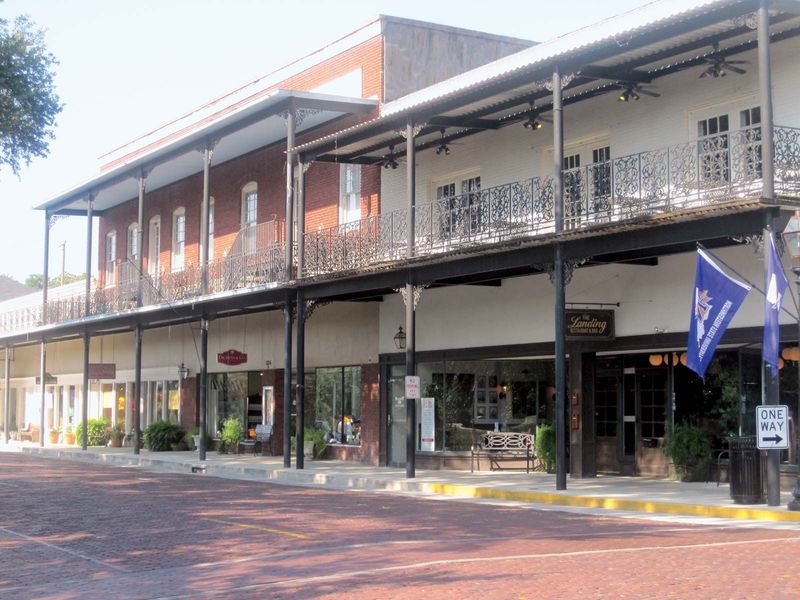
French colonial influence shapes Natchitoches’ downtown, where wrought-iron balconies overlook brick streets along the Cane River Lake. Founded in 1714, it stands as Louisiana’s oldest permanent settlement, predating New Orleans.
Famous meat pies sell from storefronts in buildings dating to the early 1800s. The downtown gained Hollywood fame as the filming location for “Steel Magnolias,” with many scenes shot in still-standing buildings. Every holiday season, over 300,000 lights transform the riverside into a festival of lights.
Southern hospitality feels genuine here, not manufactured for tourists. Shop owners share family histories spanning generations in the same buildings. Creole culture infuses everything from architecture to cuisine, creating a downtown that feels distinctly Louisiana without French Quarter crowds or commercialization.
13. Sitka, Alaska
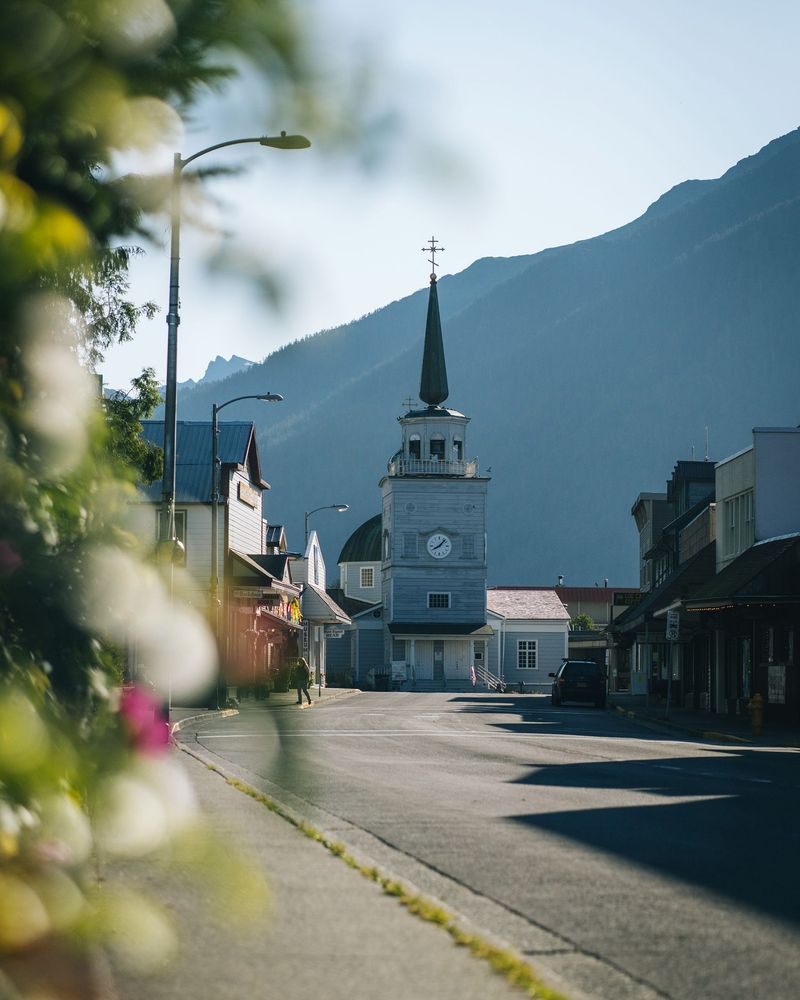
Russian history meets Tlingit culture in downtown Sitka, where onion domes and totem poles share the skyline against a backdrop of snow-capped mountains. Harbor waters lap against seawalls just steps from Lincoln Street, the main thoroughfare lined with buildings dating back to Russian America.
St. Michael’s Cathedral stands as America’s first Russian Orthodox cathedral, its golden domes visible throughout downtown. Eagle-watching breaks out spontaneously as the massive birds perch on lampposts and building ledges.
Unlike other Alaskan towns, no cruise ships can dock directly downtown, preserving its authentic character. Local seafood restaurants serve halibut caught that morning while art galleries showcase native Tlingit works alongside contemporary Alaskan artists. When fog rolls in, the downtown seems to float between mountains and sea in mystical isolation.
14. Dahlonega, Georgia
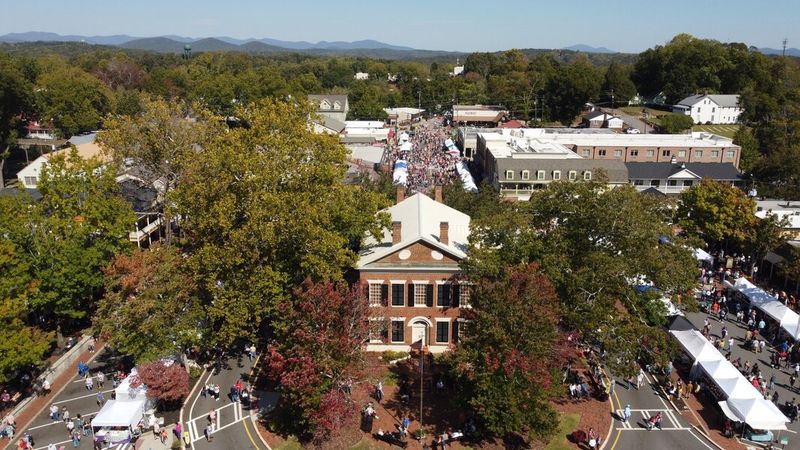
Gold rush history glitters throughout Dahlonega’s downtown square, where brick buildings with covered walkways surround the 1836 courthouse now serving as a gold museum. This mountain town sparked America’s first major gold rush in 1828, decades before California’s more famous discovery.
Wine tasting rooms now outnumber gold panning operations, as North Georgia’s emerging wine country centers around this historic square. The town name comes from Cherokee language, reflecting the indigenous heritage that predates gold-seekers.
Bluegrass music often spills from gazebos and porches on weekend evenings. Fall brings spectacular color to surrounding mountains, visible from downtown streets. Despite growing popularity, the town maintains its authentic character, with locally-owned shops selling handcrafted items instead of tourist trinkets. Even the McDonald’s was required to use brick matching the historic downtown!
15. Mackinac Island, Michigan
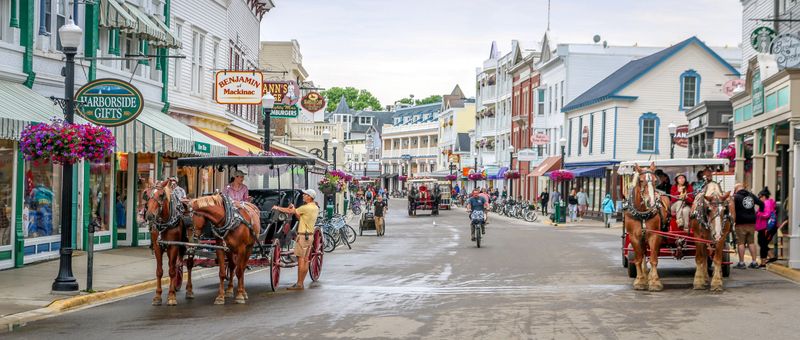
Horse hooves replace car engines on Mackinac Island’s downtown Main Street, where motorized vehicles have been banned since 1898. Victorian storefronts face a harbor filled with sailboats and ferries that provide the only access to this Great Lakes island.
Famous fudge shops perfume the air with sweet scents as visitors watch candy-making through storefront windows. The grand Hotel sits majestically on the hill above downtown, its 660-foot porch overlooking the Straits of Mackinac where Lakes Huron and Michigan meet.
Bicycles parked outside shops outnumber the island’s 500 horses. Time truly slows in this downtown where luggage arrives by horse-drawn dray and mail gets delivered by bike. Summer brings hanging flower baskets to lampposts while winter transforms the car-free streets into peaceful snowscapes when most tourists depart.
16. Telluride, Colorado
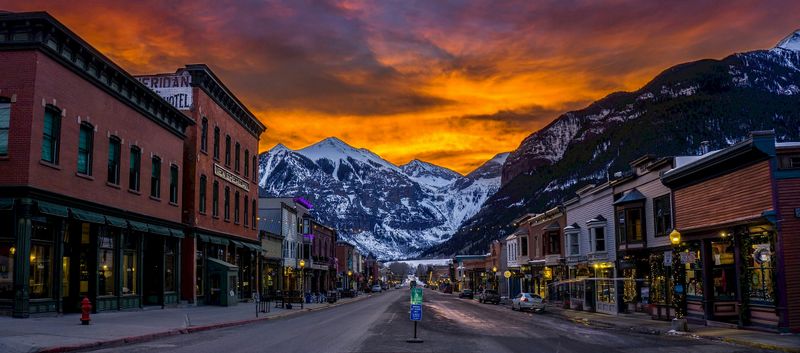
Victorian mining-era buildings stand preserved against towering 14,000-foot peaks in Telluride’s downtown, creating one of America’s most dramatically situated historic districts. The entire downtown earned National Historic Landmark status, protecting colorful buildings that once housed gold miners and now welcome skiers and festival-goers.
Free gondolas transport visitors from downtown to Mountain Village, offering aerial views of the box canyon that cradles this former silver mining camp. Colorado Avenue, the main street, runs exactly one mile from end to end, with no stoplights interrupting its historic character.
Butch Cassidy robbed his first bank in a building still standing downtown. Though now home to celebrity residents and world-class festivals, the town maintains authentic mountain character. Hiking trails begin at downtown street ends, leading directly into wilderness where waterfalls cascade down canyon walls visible from outdoor restaurant patios.
17. Montpelier, Vermont
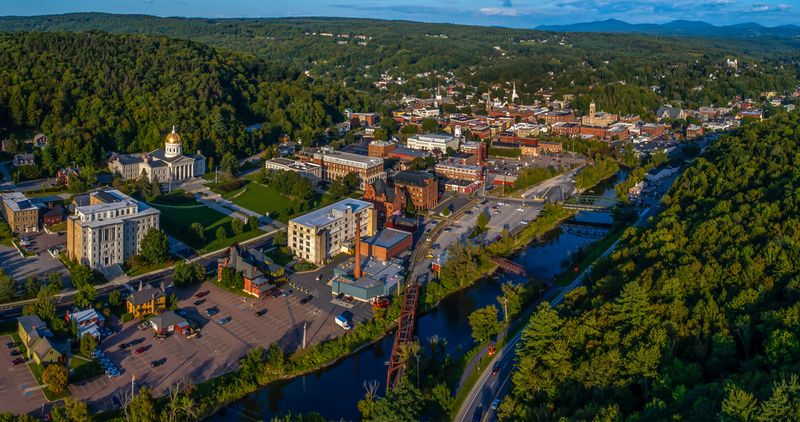
America’s smallest state capital offers a downtown where the golden-domed statehouse sits just blocks from independent bookstores and farm-to-table restaurants. Despite its capital status, Montpelier maintains the feel of a small Vermont town with just 8,000 residents.
Locally-owned shops fill historic buildings along State and Main Streets. The downtown hugs the banks of the Winooski River, with footbridges connecting neighborhoods. During maple sugaring season, even government buildings display buckets collecting sap from trees on their lawns.
No McDonald’s exists in town – the only state capital without one. Instead, culinary students from the New England Culinary Institute practice their craft in downtown restaurants. When snow falls, residents still cross-country ski down sidewalks to reach downtown shops. The entire downtown can be walked in fifteen minutes, yet contains Vermont’s cultural heart.
18. Paia, Hawaii
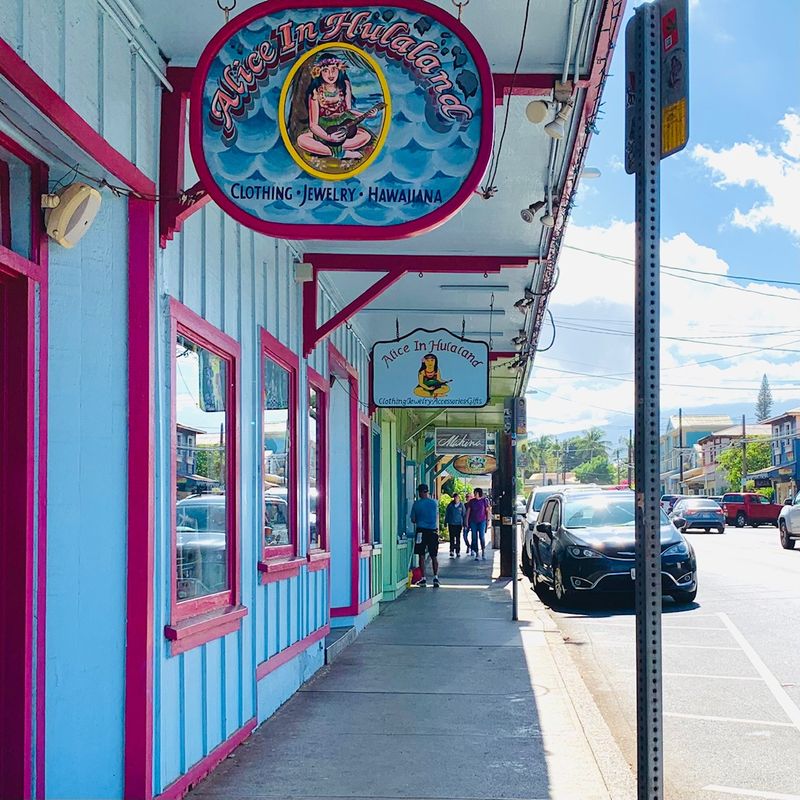
Surfer culture meets plantation history in Paia’s colorful downtown on Maui’s north shore. Wooden storefronts painted in rainbow hues house surf shops and organic cafes where barefoot customers are perfectly acceptable.
Former sugar plantation workers’ homes now contain art galleries showcasing local artists. The town serves as gateway to the famous Road to Hana, but many visitors linger here instead, captivated by its laid-back vibe. World-class windsurfers gather at nearby Ho’okipa Beach, visible from downtown’s eastern edge.
Buddhist temples neighbor historic buildings reflecting the town’s multicultural plantation past. Celebrities shop alongside locals at Mana Foods, the natural grocery that anchors downtown. Despite development elsewhere on Maui, Paia maintains its funky, authentic character where million-dollar homes sit hidden behind modest storefronts and pickup trucks park alongside luxury cars.
19. Bardstown, Kentucky
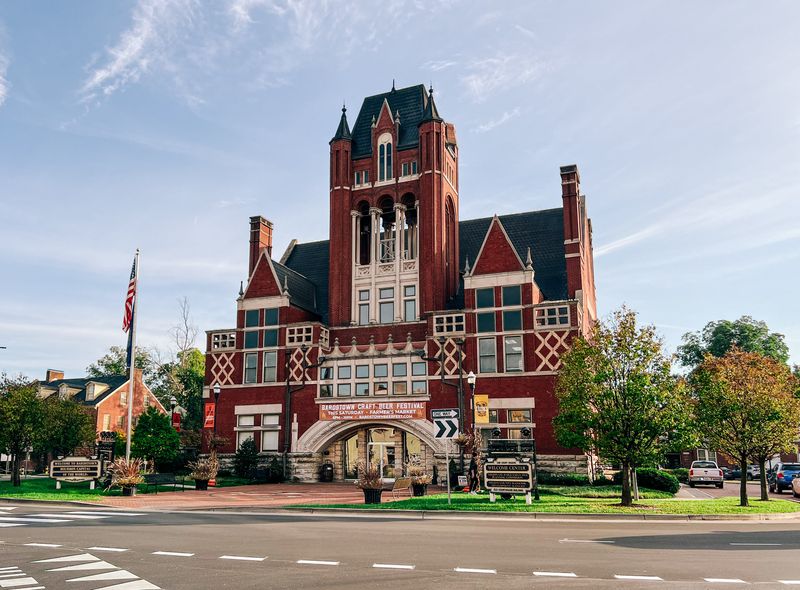
Bourbon heritage flows through Bardstown’s downtown like the whiskey that made this Kentucky town famous. The second-oldest city in Kentucky centers around a courthouse square where buildings dating to the 1780s now house bourbon tasting rooms and craft cocktail bars.
My Old Kentucky Home State Park sits within walking distance of downtown, where Stephen Foster found inspiration for the state song. Distillery warehouses dot surrounding hillsides, their distinct shapes visible from downtown streets where the air often carries the sweet scent of fermenting mash.
History runs deeper than bourbon here. Civil War-era buildings house museums alongside restaurants serving Kentucky ham and spoonbread. The downtown feels authentically Southern without manufactured charm. During the annual Kentucky Bourbon Festival, the population triples as visitors fill historic streets to celebrate America’s native spirit.
20. Jacksonville, Oregon
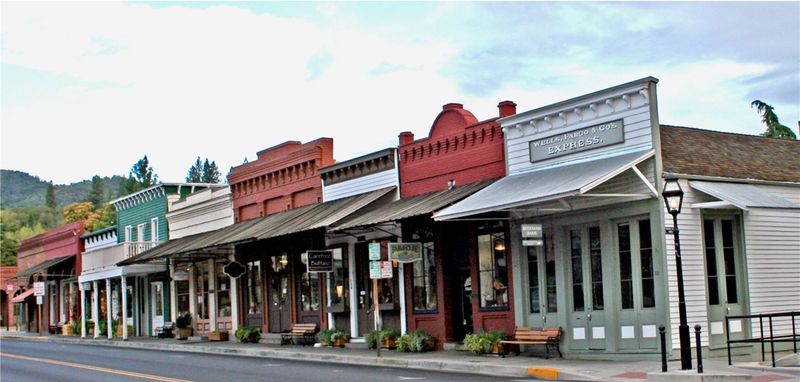
Gold rush wealth built Jacksonville’s downtown, which survives intact as a National Historic Landmark where brick and wooden buildings from the 1850s now house wineries and artisan shops. When gold fever faded and the railroad bypassed town, development stopped – accidentally preserving a perfect Victorian-era downtown.
Music fills the streets during summer’s Britt Festival, when world-class performers play at an outdoor amphitheater just blocks from downtown. Historic homes surround the commercial district, their gardens open for tours that reveal how miners-turned-merchants lived after striking it rich.
Trolleys transport visitors along streets too narrow for modern traffic. The town cemetery tells stories of Chinese workers, pioneer women, and gunfighters through elaborate headstones. During holidays, gas lamps illuminate streets where ghost tours reveal tales of Oregon’s early days amid perfectly preserved architecture.
